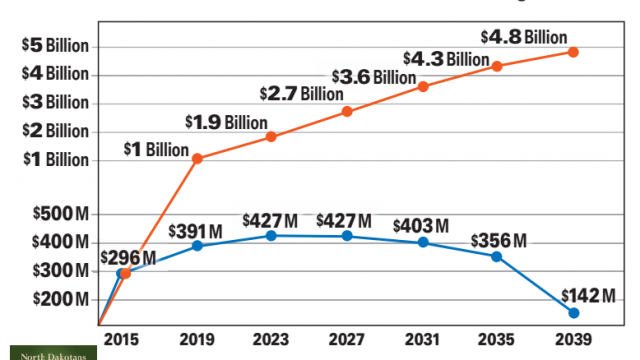Jon Godfread: Conservation Measure Backers Have Flawed Assumptions

I read with great interest a recent letter from Steve Adair and Naomi Thorson about their interpretation of the Clean Water, Wildlife and Parks Amendment.
It included several fundamentally flawed assumptions that need to be corrected.
Among them:
- That this is an opportunity to invest “a small percentage” of the state’s revenue into the conservation fund that would be created through their amendment. There’s nothing small about it. Five percent of North Dakota’s oil extraction tax would go into the fund, which means between $300 and $400 million a biennium, or $3 million a week. That’s almost $5 billion over the 25-year life of the amendment. These are numbers based on current oil production projections.
- That this won’t impact other important needs in the state “such as education and infrastructure.” Wrong. This money has to come from somewhere, and it’s going to come out of revenue that goes into the state’s general fund. Right now, some of the revenue from the oil extraction tax goes into the general fund. But, under this proposed amendment, five percent of that revenue would be siphoned right off the top for this fund. This means less money for education, infrastructure, health and human services, and even property tax relief. I’m all for conservation but not when it’s at the expense of our kids, seniors, and the neediest among us.
- That this will provide “options for farmers and ranchers to improve their operations.” Adair and Thorson must not have any contact with North Dakota farmers and ranchers. Otherwise, they would know that the agriculture community and every major agriculture organization in our state opposes this measure. They oppose it for many reasons. Chief among them is that the conservation funds could be used to buy up farm land, driving up land prices and making it harder for agriculture to compete, especially new farmers and ranchers. And once these non-profit groups buy the land, they’ll be able to do whatever they want with it, whether that means taking it out of production agriculture, restricting public access or closing it to hunters and fishermen. This shows just how out of touch the measure’s supporters are with the agriculture industry, and again confirms our belief that this is simply a money grab by out-of-touch, out-of-state organizations.
- That it will create an advisory board “that would be the most diverse in the state.” This can’t be further from the truth. How can that possibly be when the advisory board is essentially designed to shut out the concerns of our state’s two largest industries – agriculture and energy? Of the 13 members on the advisory board, there is only room for one representative each from North Dakota’s top two leading industries. Advisory board members would be required to have a background in land conservation or conservation activism. Requiring that background stacks the deck against agriculture and energy. Real diversity is reflected in North Dakotans for Common Sense Conservation, a broad-based coalition of more than 30 agriculture, business, industry and other stakeholder organizations that has come together to oppose this measure.
- That it would be “part of the state constitution.” That’s disconcerting for many reasons. Not only would it mandate massive amounts of conservation spending for the next 25 years — to the tune of some $5 billion — but the only way to change or repeal it would be through another statewide vote of the people. How is that a good thing?
- Adair and Thorson also mention other states have passed similar measures. Let’s look at what’s happened in Minnesota since voters approved their conservation amendment in 2008, which similarly chiseled a 25-year tax increase into their constitution. Adair and Thorson would like you to believe that it’s a good thing that $300 million a year is pouring into Minnesota’s conservation fund, which is supposedly dedicated to clean water, parks and trails, outdoor habitat and the arts and cultural scene. What Adair and Thorson don’t want you to know is that in an audit released in late 2011, Minnesota’s Office of the Legislative Auditor raised many concerns about the conservation fund and its governing process, concluding that there are concerns that the money is not going for what it was intended.
We all care about protecting North Dakota’s great outdoors, wildlife and natural resources. But this measure is too fundamentally flawed to allow it to become enshrined in our state’s constitution. Help keep it off the November General Election. Just remember, it’s okay to decline to sign.




